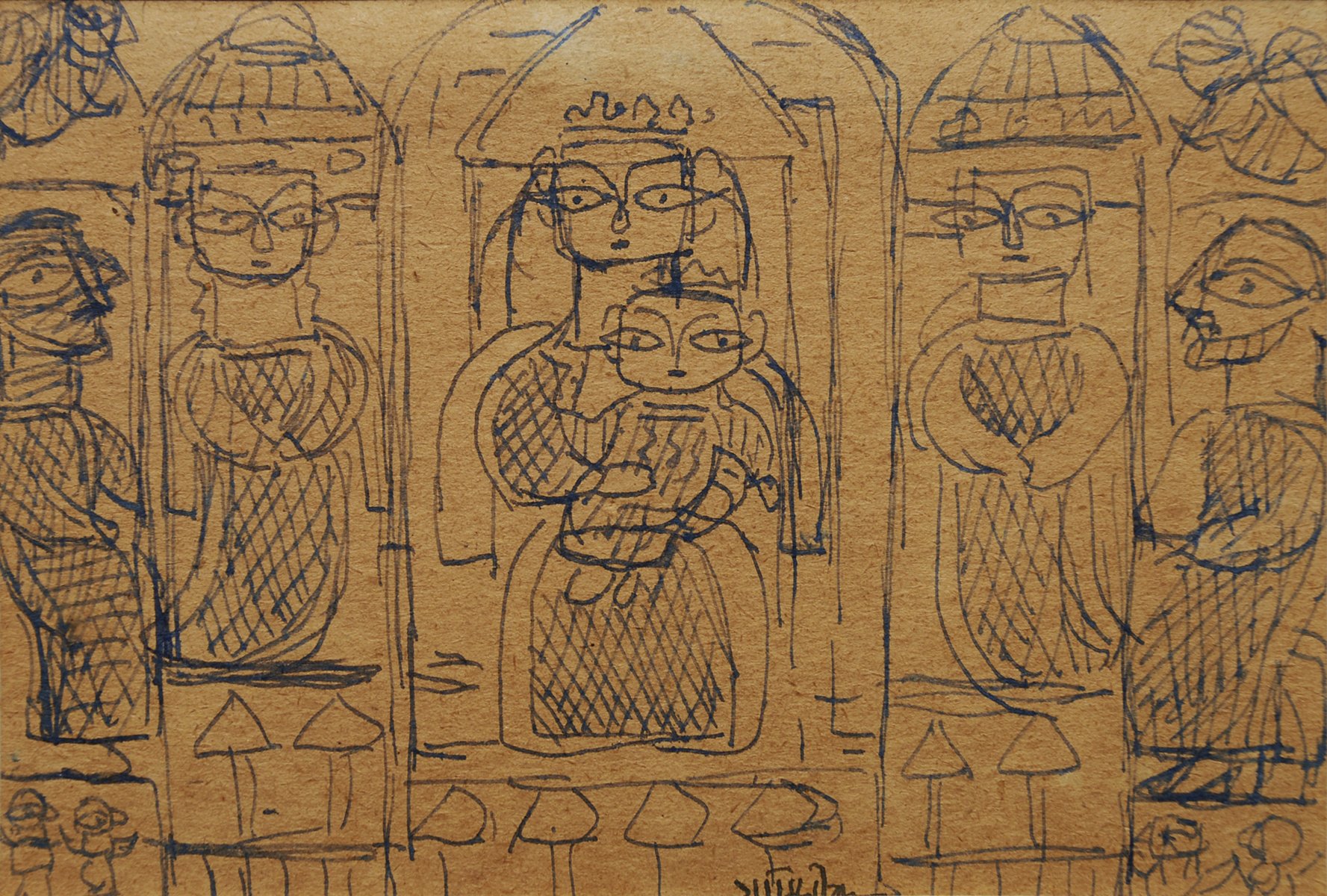
Jamini Roy
October 31 - December 6, 2014 at Akar Prakar, Delhi
Jamini Roy’s greatest credit has been that he really challenged the rearguard action of remnants of the Neo-Indian school stubbornly defending the studied archaism.
By his campaigns he defeated them. This he did by relying on the vigour and vitality of folk art. Folk art was his source, as Picasso’s was primitive African and Iberian Art, Matisse’s was Persian art, the Impressionists’ including Van Gogh’s was Japanese landscape and Henry Moore’s was pre-Columbian American art. Part of the misunderstanding about Jamini stems from our not conceding that he was a modern artist steeped in the Western tradition. That he happened to be an Indian added to his and our confusion. He belonged to the modern trend of referring to non-Western sources of human art; the more primitive or naïve the better. This tendency of locating fresh resources for expression was unknown to Henry Rousseau, but his conjuring of tropical jungles as fantasy in simplified form was taken as a good substitute.
Sandip Sarkar
Jamini Roy | Landscape | Gouche on Paper | 13.5 x 9 in
Jamini Roy | Gopini | Gouche on Board | 16 x 20 in
Jamini Roy | Mary & Jesus with four Apostles | Pen & ink on Paper | 4.5 x 7 in
Jamini Roy | Mary & Jesus | Gouche on Paper | 36.5 x 21.5 in
Jamini Roy | Naika | Gouche on Board | 18.5 x 14.5 in
Jamini Roy | Sitting Woman | Tempera on Board | 28 x 16 in
Jamini Roy | Sitting Man | Gouche on Paper | 15 x 11 in
Jamini Roy | Naika from Kalighat | Ink & wash on Paper | 23.75 x 15 in
Jamini Roy | Untitled | Tempera on Paper | 11.75 x 9.25 in
Jamini Roy | Saint | Ink & Wash on Paper | 26.75 x 14 in
Jamini Roy | Bansi Badhak | Gouche on Paper | 13.5 x 9 in
Jamini Roy | Untitled | Pen & ink on Paper | 12.75 x 8 in
Jamini Roy | Untitled | Pen & ink on Paper | 13 x 8 in
Jamini Roy | Untitled | Pen & ink on Paper | 8 x 13 in
Jamini Roy | Krishna and Balram | Gouche on Paper | 5.5 x 18.5 in
Jamini Roy | Boatmen | Oil on Canvas | 15.5 x 17.5 in
Jamini Roy | The Cat | Gouche on Paper | 9.5 x 13 in
Jamini Roy (1887- 1972)
In the 1920s, many experiments in art practices took place in Calcutta and Santiniketan. Amidst this activity, the story of Jamini Roy, who turned to the folk arts of Bengal, is remarkable. Although trained at the Government School of Art, Calcutta, Roy’s artistic impulses were rooted in his growing years in Beliatore village in the Birbhum district of undivided Bengal at that time. Roy adopted the simplification of the forms, the bold, flat colours and the medium, material and themes of local folk paintings. He discarded expensive canvas and oil paint, and opted for the more inexpensive material and medium of the folk artist. He rendered images from Ramayana and Krishna Lila. He painted ordinary men and women from the village, reinventing popular images from the patua’s repertoire. Jamini Roy restricted his palette to seven colours - Indian red, yellow ochre, cadmium green, vermillion, grey, blue and white. These were mostly earthy or mineral colours.
The appropriation of folk idioms manifested in various ways. There was a phase in which he adopted the calligraphic brush lines of Kalighat patuas to create sophisticated forms. The austerity of lines only serves to highlight Roy’s superb control over brush. The lines drown lyrically and sometimes even sensuously with lampblack over white or pale grey background show not only vigour, but also the poetry latent in the human form. The paintings Baul and Woman Seated are excellent examples of this style.
Roy brought the sensibilities of a formerly educated artist to his appropriation of folk idiom. He cannot escape sophistication in his figuration. Moreover, the monumentality that he often brings to his figuration recalls the quality of classical sculptures.
















